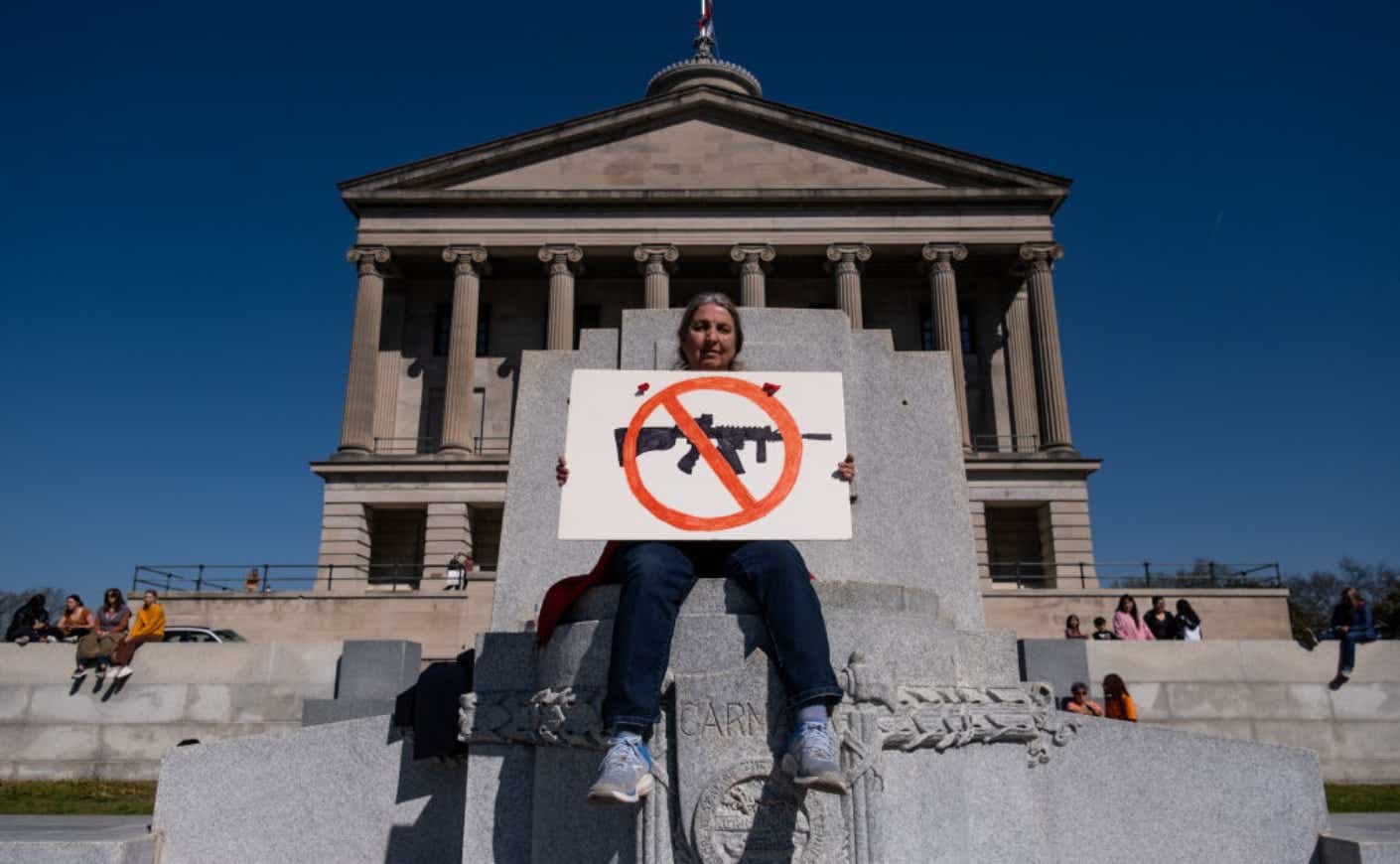After a string of tragic attacks, 2023 is on track to be one of the worst years for mass shootings in America. As of Oct. 26, at least 35,275 people have been killed due to gun violence, which amounts to almost 118 deaths per day, according to the Gun Violence Archive. (Since there’s no official consensus on what constitutes a mass shooting, the nonprofit defines a mass shooting as an incident in which four or more people, not including the assailant, are shot or killed.)
What’s worse is this violence has become so prevalent that firearms are now the leading cause of death among kids. Of those killed so far this year, 1,157 were teens and 246 were children.
So what are lawmakers doing about all of this bloodshed? Just last year, the House passed legislation that would ban assault weapons for the first time in nearly two decades, but it remains stalled in the Senate, despite President Biden’s calls to pass it.
Amid a push for more action, here’s what we know about the history of laws surrounding bans on assault weapons, and some of the challenges Congress faces in making any kind of meaningful reform.
First, what is an assault weapon?
What constitutes a so-called “assault weapon” has been a highly contentious issue over the years.
Gun control advocates pushing for an assault weapons ban have pushed for the inclusion of AR-15-style rifles, but the firearms industry insists these kinds of semi-automatic weapons and others don’t fall under this definition. According to pro-gun groups like the National Rifle Association, “an assault rifle is fully automatic — a machine gun.” Meanwhile, firearm trade associations, like the National Shooting Sports Foundation, point out that “AR” actually doesn’t stand for assault rifle or automatic rifle but instead refers to the company ArmaLite Rifle that first developed the weapon.
To complicate matters even further, some states also have different definitions in gun laws for what constitutes an assault weapon. For instance, California expanded its definition of these types of weapons in 2016 when it banned AR-15 rifles that are equipped with attachments known as bullet buttons, which essentially make reloading guns both faster and easier. But it’s worth noting that those who bought them before the law took effect on Jan. 1, 2017, are still allowed to own them if they register the weapons with the state, and they’ve had several opportunities to do so, including as recently as last year.
Have assault weapons been banned before?
Former President Bill Clinton signed a 10-year assault weapons ban into law in 1994 but it expired 10 years later.
Though several studies have shown that mass shooting deaths dropped when the ban was in effect, lawmakers have failed to renew the ban in subsequent years. The most recent attempt was last year, when Democrats passed House Bill 1808 — or the Assault Weapons Ban of 2022 — that would make it a crime to “knowingly import, sell, manufacture, transfer, or possess a semiautomatic assault weapon (SAW) or large capacity ammunition feeding device (LCAFD).” Though the bill would ban some 200-plus types of semi-automatic rifles like AR-15s, the restrictions wouldn’t necessarily apply to other models.
But Senate Republicans haven’t been open to additional gun measures since passing the Bipartisan Safer Communities Act last June. The bipartisan measure included expanding background checks on people between the ages of 18 and 21, and adding incentives for states to enact flag laws that allow groups to petition courts to remove weapons from people that could be a threat to others or themselves.
“While this bill doesn’t do everything I want, it does include actions I’ve long called for that are going to save lives,” Biden said just before signing the deal.
What are gun control advocates doing?
Despite the recent stalemate, advocates aren’t giving up. Nonprofit groups like March Fourth has staged demonstration sin Washington, D.C. to push for the passage of a federal assault weapons ban and “to put faces to the hurt, the heartbroken, and the helpless.”
Other gun control groups are speaking up too: Giffords, an organization that was started by former Rep. Gabby Giffords who survived a mass shooting in 2011, tweeted for Americans to continue to fight for reform.
“At least 22 people were killed and more than 50 people injured because of a senseless act of gun violence,” Giffords tweeted the day after the tragic shooting in Lewiston, Maine. “It doesn’t have to be this way and it shouldn’t be this way. Entire communities shouldn’t have to live in fear of an active shooting.”









